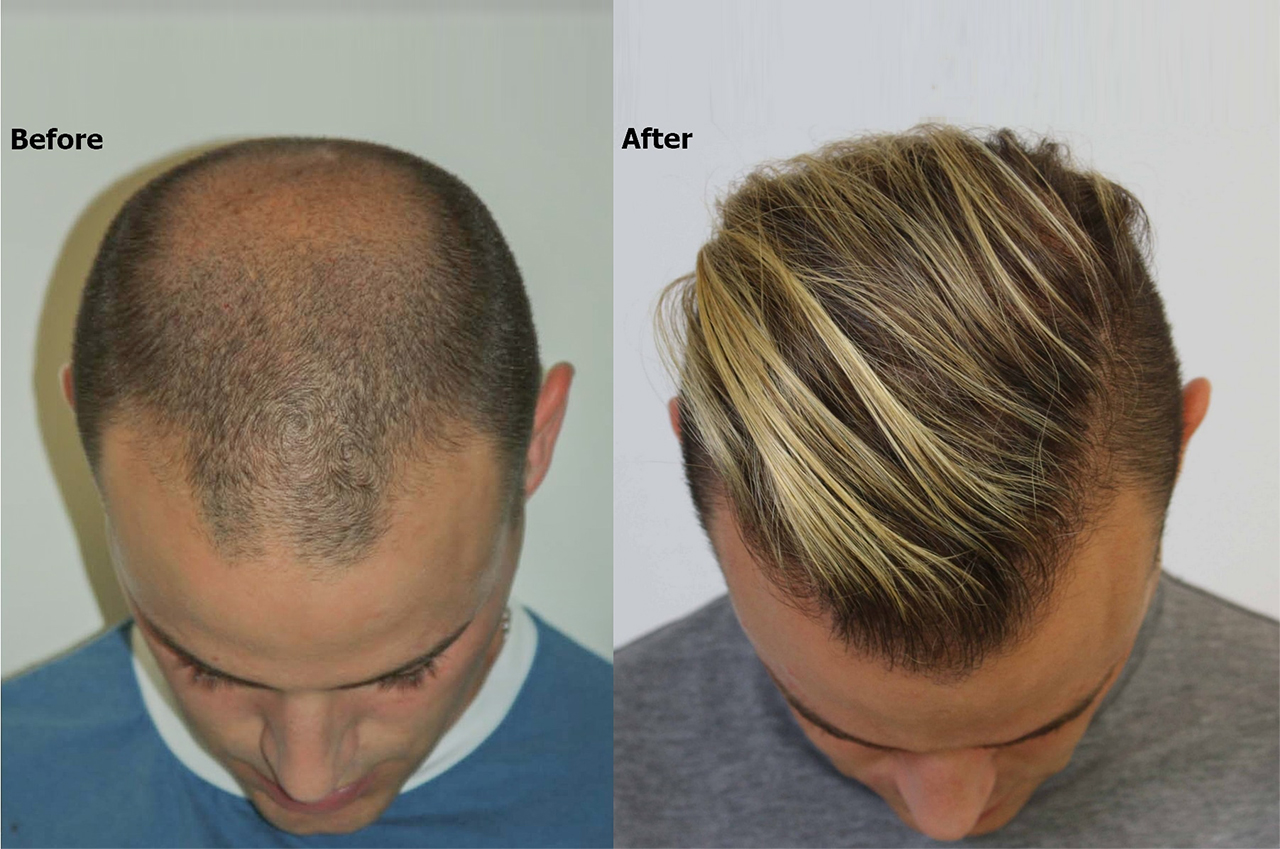Hair Loss Treatment
Hair loss treatments encompass a variety of options, ranging from medications to surgical procedures. Here's a breakdown of some common treatments for hair loss:
Medications:
- Minoxidil :
Available over-the-counter as a topical solution or foam, minoxidil is applied directly to the scalp to stimulate hair growth and slow down hair loss. It's effective for both men and women. - Finasteride :
This prescription medication is taken orally and works by blocking the conversion of testosterone into dihydrotestosterone (DHT), a hormone linked to hair loss in men. Finasteride is primarily used to treat male pattern baldness and is not recommended for women.
- Platelet-Rich Plasma (PRP) Therapy: PRP therapy involves extracting a sample of the patient's blood, processing it to isolate platelet-rich plasma, and then injecting it into the scalp. PRP contains growth factors that may stimulate hair follicles, promote hair growth, and improve hair density.
- Growth factor concentrate: Growth Factor therapy is an innovative procedure to treat hair loss. In this, we extract blood from the patient and then treat it to get the final product called GFC(Growth Factor Concentrate). GFC is replete with one’s own growth factors that have the potential to heal damaged tissues and promote cell growth. It is directly injected into the patient’s scalp in high concentration, triggering hair formation. Since it is prepared from the patient’s own blood without any contamination, the serum is completely safe and has minimal side effects
- Stem Cell Therapy: Stem cell therapy involves using stem cells to regenerate and rejuvenate hair follicles. These stem cells can be derived from various sources, including adipose tissue (fat) or the patient's own blood or bone marrow. Research in this area is ongoing, with promising results for hair regeneration.
- Exosome Therapy: Exosomes are extracellular vesicles that contain growth factors, proteins, and genetic material. Exosome therapy involves injecting exosomes into the scalp to promote hair growth, improve hair follicle health, and reduce inflammation.
- Low-Level Laser Therapy (LLLT): LLLT devices deliver low-level laser light to the scalp, stimulating cellular activity and promoting hair growth. This non-invasive treatment option is often used in conjunction with other therapies for enhanced results.
- Microneedling: Microneedling involves using a device with fine needles to create micro-injuries in the scalp. This process stimulates collagen production and increases blood flow to the scalp, promoting hair growth and improving the absorption of topical treatments.
- Topical Formulations: Advanced topical formulations may contain a combination of ingredients such as minoxidil, finasteride, caffeine, vitamins, and peptides to target various aspects of hair loss, including follicle stimulation, DHT inhibition, and scalp health.
- Nutritional Supplements: Certain vitamins, minerals, and herbal supplements are marketed as hair loss treatments, although scientific evidence supporting their effectiveness is often limited. These may include biotin, iron, zinc, vitamin D, and saw palmetto extract.
- Hair Transplant Surgery: Follicular Unit Extraction (FUE) and Follicular Unit Transplantation (FUT) are surgical procedures where hair follicles are harvested from donor areas and transplanted into areas experiencing hair loss. This can restore natural-looking hair growth in the affected areas.
- Biofiber hair transplant : Biofibre hair transplant is a method wherein artificial or synthetic hair created from inert materials are implanted directly into the scalp of the individual. It is one of the greatest boons in today’s scientific innovation for people suffering from complete baldness or those who don’t have hair at the back side of the head which is usually used for the FUT or FUE hair transplant method.
- Lifestyle Changes: Improving diet, managing stress levels, getting regular exercise, and avoiding harmful habits like smoking can support overall health, which may in turn promote healthy hair growth.
